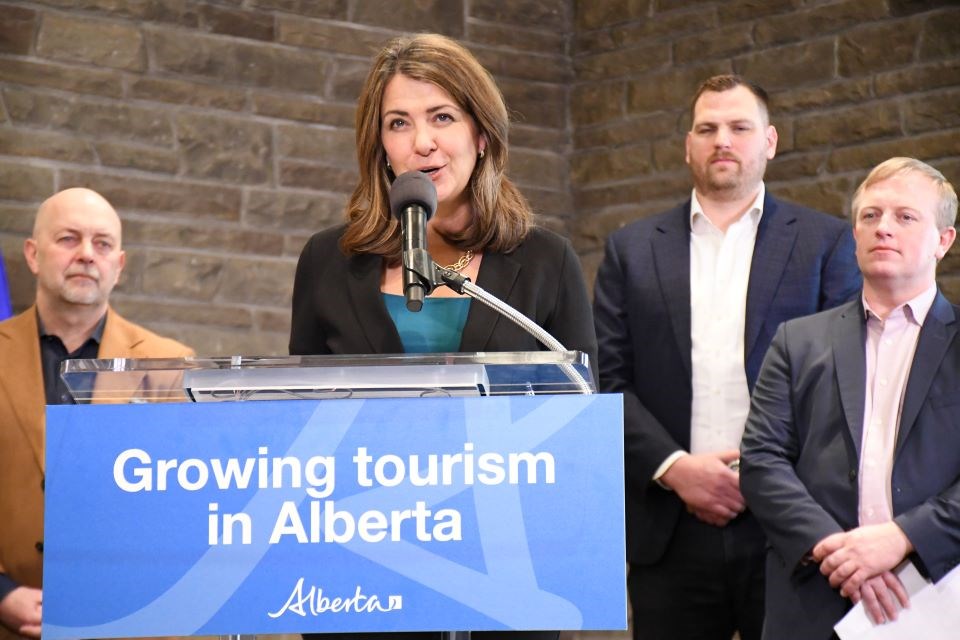Premier Danielle Smith presented a new long-term tourism strategy to help Alberta’s visitor economy reach $25 billion per year by 2035.
Smith made her announcement during a visit to Jasper on Wednesday, Feb. 14.
She highlighted how Jasper and Banff were the two most visited national parks in Canada and noted the number of other attractions Alberta had to offer.
“With such incredible landscapes and an equally impressive range of cultural attractions right in our backyard, Alberta already has the assets that we need to sustain a strong tourism industry for decades to come,” Smith said during a press conference.
“But our government has a far more ambitious vision for the future of Alberta's tourism. Today, I'm pleased to announce Alberta's new tourism strategy. The strategy takes a whole-of-government approach to sustainably growing our province's visitor economy.”
Smith said the strategy includes rolling into rural communities, expanding and diversifying tourism product offerings, increasing air and road access and easing labour shortages.
In 2022, Alberta saw a record $10.7 billion in tourism spending, an increase of $600 million from 2019.
Smith said this shows Alberta was already on its way to reaching its goal of $25 billion in yearly visitor expenditures.
“We’re going to do this by prioritizing sustainable and responsible development, such as all-season resorts, which will give Alberta tourism operators even more of a competitive edge.”
She noted how the government had increased funding for Travel Alberta over the years to support increased air access.
“In the last three years, Travel Alberta has expanded the number of airline seats into the province for key destinations across the United States, Europe and Asia. With this increased funding they will be able to continue generating and driving visitor demand to our incredible province.”
Travel Alberta is also focusing on expanding tourism growth across communities in rural Alberta.
“This strategy also includes measures to continue growing Indigenous tourism opportunities across the province and make it easier for Indigenous operators to access capital for large scale projects,” Smith said.
Joseph Schow, minister of Tourism and Sport, said the whole-of-government approach is based on five key pillars that will focus on the most crucial element and areas for development.
These pillars are leadership and alignment, competitive product, people and careers, expansion of access and Indigenous tourism.
“Travel Alberta and the Government of Alberta will continue to work with industry to develop unique tourism experiences in the provinces tourism development zones,” Schow said regarding leadership and alignment.
The second pillar focuses on developing new competitive products that offer all-season experiences and fresh opportunities for tourists.
As for people and careers, part of this pillar includes a new immigration stream for tourism and hospitality, which was announced the day prior to this announcement.
“We will also work with post-secondary institutions to help guide more students into careers in the tourism sector,” Schow said.
He added how they would continue to work with airlines to expand access, and the government would focus on developing Indigenous tourism.
“We will expand our growing Indigenous tourism sector by supporting development to meet the increasing demand for authentic Indigenous tourism experiences while also creating meaningful partnerships with Indigenous communities across Alberta.”
Several tourism stakeholders have praised this strategy, including the Tourism Industry Association of Alberta and Indigenous Tourism Alberta.


